Diplomat Mine shovels and draglines – 1997
Not one but two large mining shovels, along with the bucket of a third can be seen at the Diplomat Mine interpretive site near Forestburg Alberta. These massive machines represent some of the last of their kind and are historically significant. Also shown in the report is an old dragline at the same mine site, which sadly has since been scrapped.
You really can’t appreciate the size of these beasts until you see them up close. They are simply a sight to behold.
The Diplomat Mine is located southwest of Forestburg Alberta just north of and overlooking the Battle River. While coal mining had taken place here as early as 1907, these were minor underground operations. Later Luscar Coals took an interest in the site and in 1950 established a surface mine here. This makes it an early example of this type of mine in Canada – at that date most coal was still being mined underground.
Operating until 1986 the mine was served by a spur off a nearby CNR branchline and its output was shipped to various industrial concerns in Western Canada along with the nearby generating station.
The year the mine opened a Marion 360 stripping shovel was brought in. It was purchased used from a mine in Illinois USA. Built in 1927 and weighing in at some 500 tonnes, this shovel was at one time the largest mobile land machines in the world and at the time of it’s arrival here, certainly the largest in Canada. For the first twelve years the mine operated, this Marion was the only stripping shovel used. This behemoth was finally retried around 1980 and at that time it must have been one of the oldest stripping shovels still at work.
In 1950 or 1964, depending on who you talk to, a Bucyrus Erie 120-B loading shovel was brought in. Almost tiny looking in comparison to it’s field mate the Marion 360, it’s still a huge machine and weighs in at 160 tonnes. I could not find information on its past, other than we know it was built in 1944. This beast served the company well until the mine closed in the mid 1980s.
Note, a stripping shovel clears away the overburden, and a loading shovel digs at the coal face and loads it into trucks. I have been told that a second Bucyrus Erie 120-B also worked at this mine.
In 1962 a larger stripping shovel was brought in. Named “Mr Diplomat” this Bucyrus Erie 950-B took over the position as the largest machine of its type in Canada – weighing in at 1400 tonnes, or almost three times the weight of the Marion 360. The unit was built in the mid 1930s, retried in 1984 and scrapped some years later. Only the dipper bucket of this unit remains sitting at the interpretive site, but I somehow missed taking a picture of it.
Parked at the far end of the mine away form the interpretive site, there used to be a Marion 7400 dragline. Looking at Google Earth it now appears to be gone, and no information could be found on it. Based upon that it must have been scrapped. It’s not know when this unit was built and for who, when it arrived here, and when it was retried. I’ll keep looking though. See an update to this article below – we have since uncovered more info on this unit.
One thing in common across all these machines is their advanced age and seeing them working must have been quite a site. By the 1970s the Diplomat Mine was an operating museum. When the mine closed the two monsters seen here were donated to the local historical society.
Just south across the Battle River in a place called Cordel are the working Paintearth and Vesta Mines. The output of these surface operations is used to exclusively feed the Battle River Generating Station, which is located just north of them. You can view the mines from nearby roads and if you can see a dragline operating, it’s an amazing thing to watch. They have a Marion 8200 named Brutus, which we saw at the time of our visit. I believe they have others draglines as well, plus lots of other heavy machinery. The coal here is not far from the surface, which I guess makes for easy mining.
The Battle River Generating station was commissioned in the mid 1950s.
While exploring the area we found the old Notre Dame de Savoie Church at a cross-roads.
Both the Marion and Bucyrus Erie companies specialized in large earth moving machinery and examples their work can be seen the world over. A noteworthy example many have seen is the Space Shuttle transporter built by Marion. Bucyrus bought Marion in the 1990s.
These images were scanned from 35mm prints.
Update: January 2013 and July 2021. Additional information about the Marion 7400 dragline was sent to me by Tim Swaren, who worked at the nearby Battle River generating station. Thank you Tim!
“The Marion 7400 was, alas, scrapped in 2002. It operated at the Diplomat Mine from 1974 to 1986. It was originally built back in about 1959, I think and operated at a mine in the UK until it was purchased by Luscar Coal and brought to Canada to be used at the Diplomat Mine. My uncle operated it for several years and has many pics of the 7400 as well. Where you saw it parked in 1997, was where it had stopped mining in 1986. There was talk one time of moving it to where the Marion 360 is parked and making it part of the Diplomat Mine Interpretive site but the cost and logistics proved to be too much to handle. The bucket off the 7400 sits on display along Hwy. 53 in Forestburg, AB just to the east of the school. It is the only thing that was salvaged from the dragline.” 2013.
“Chris, some corrections to the information I gave you about the Marion 7400. It was originally built in 1949, not 1959. It was operated by a mining firm called G. Wimpey & Co. Ltd. at a mine in Australia. In 1959 it was moved to the Bryn Pica opencast mine in south Wales owned by the same company. In 1974, the dragline was purchased by Luscar Coal and brought to Canada. Info is from a magazine article written by Keith Haddock, former mine engineer at the Diplomat Mine.” 2021.
It’s a world traveller!
To see some other other coal mining related posts, follow these links…
Abandoned mine cars.
Bankhead Alberta ghost town.
Greenhill Mine, an incomplete tour.
If you wish more information on this place, by all means contact us!
Date: Summer 1997.
Location: Diplomat mine site, near Forestburg AB.
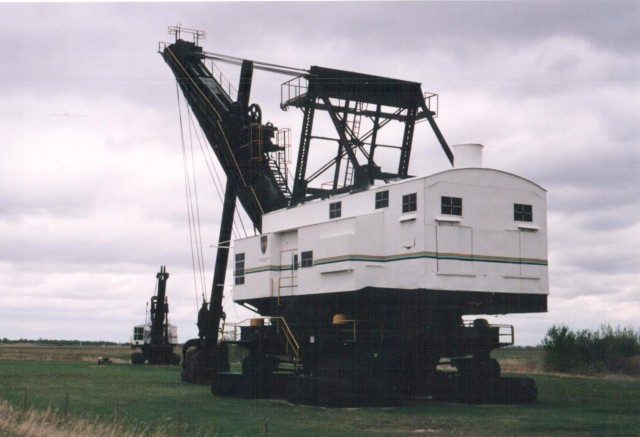
At the Diplomat Mine Site Forestburg Alberta.
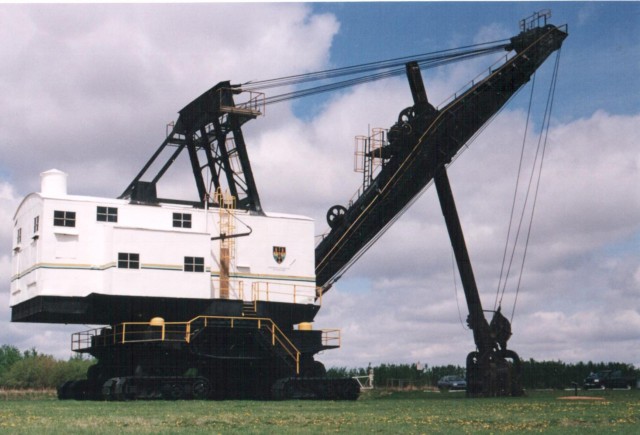
This massive unit was built in 1927.
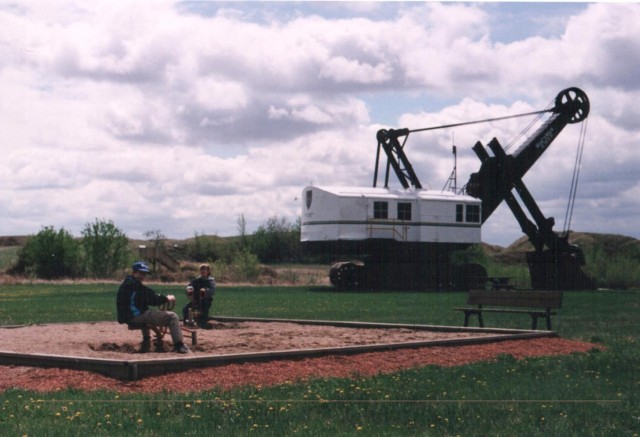
This smaller shovel (haha smaller that’s funny) is from 1944.
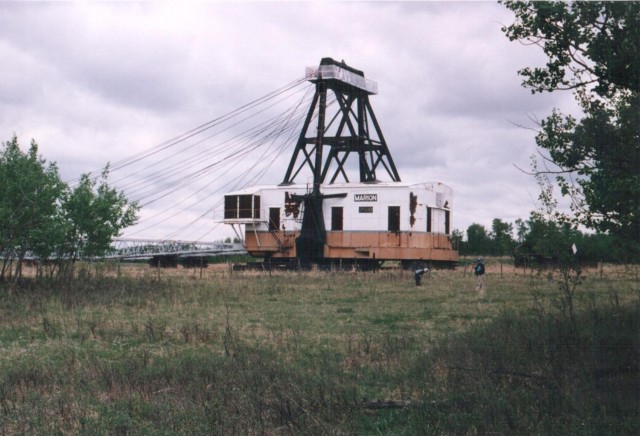
This Marion 7400 dragline was at another section of the mine and is now gone.
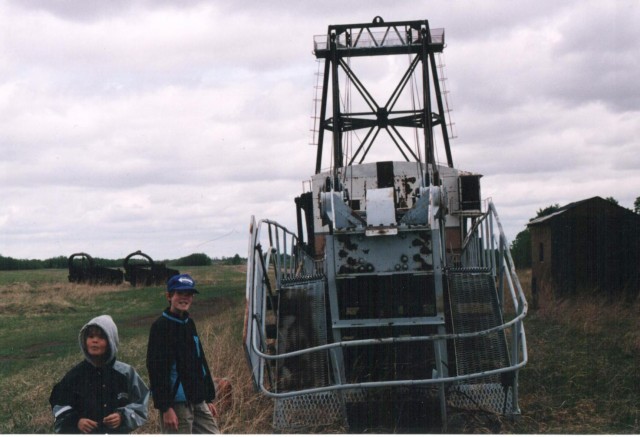
Our boys at the end of the boom. Notice the buckets in the background.
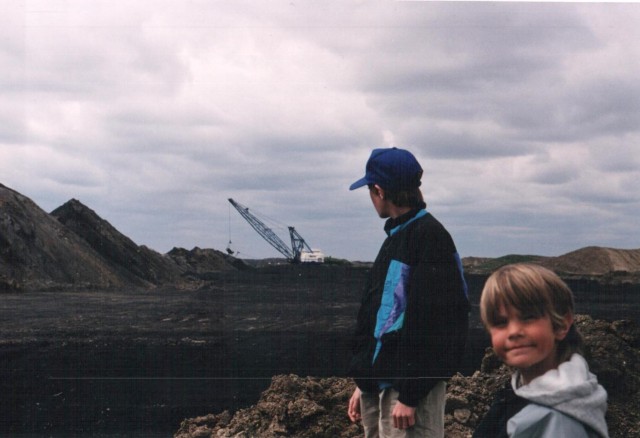
This Marion 8200 dragline is named Brutus. Say hi to Jay and Will.
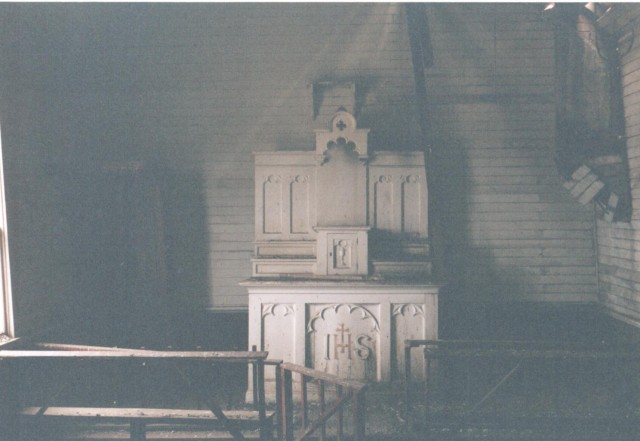
The old Notre Dame de Savoie Church not far from the mine.

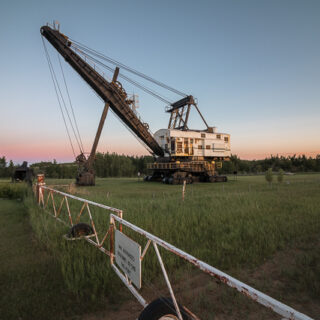
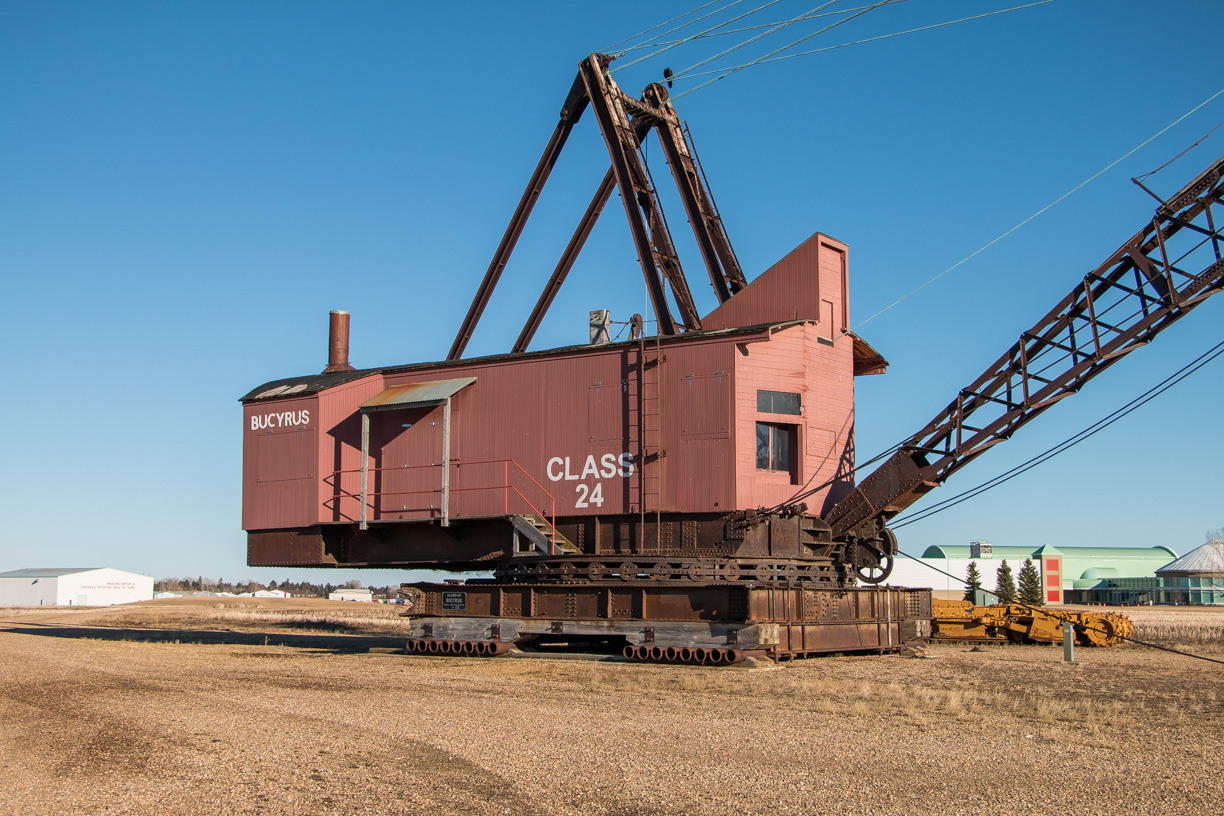
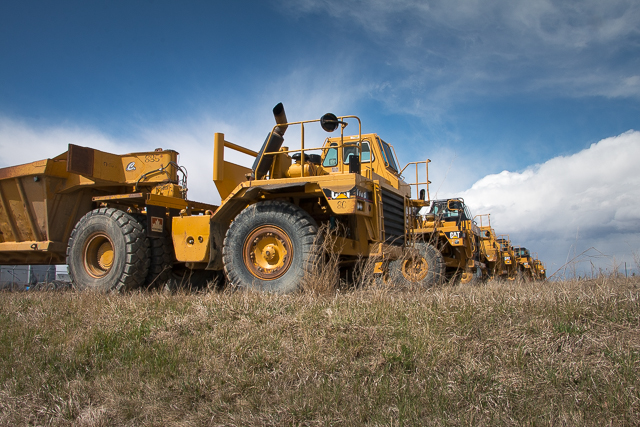
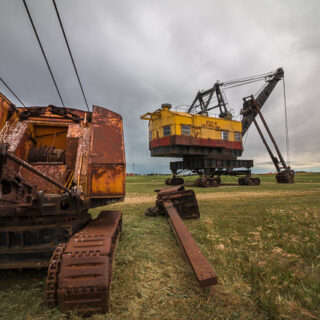
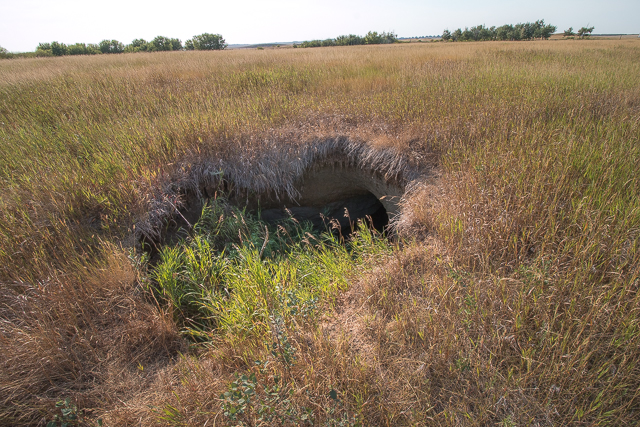
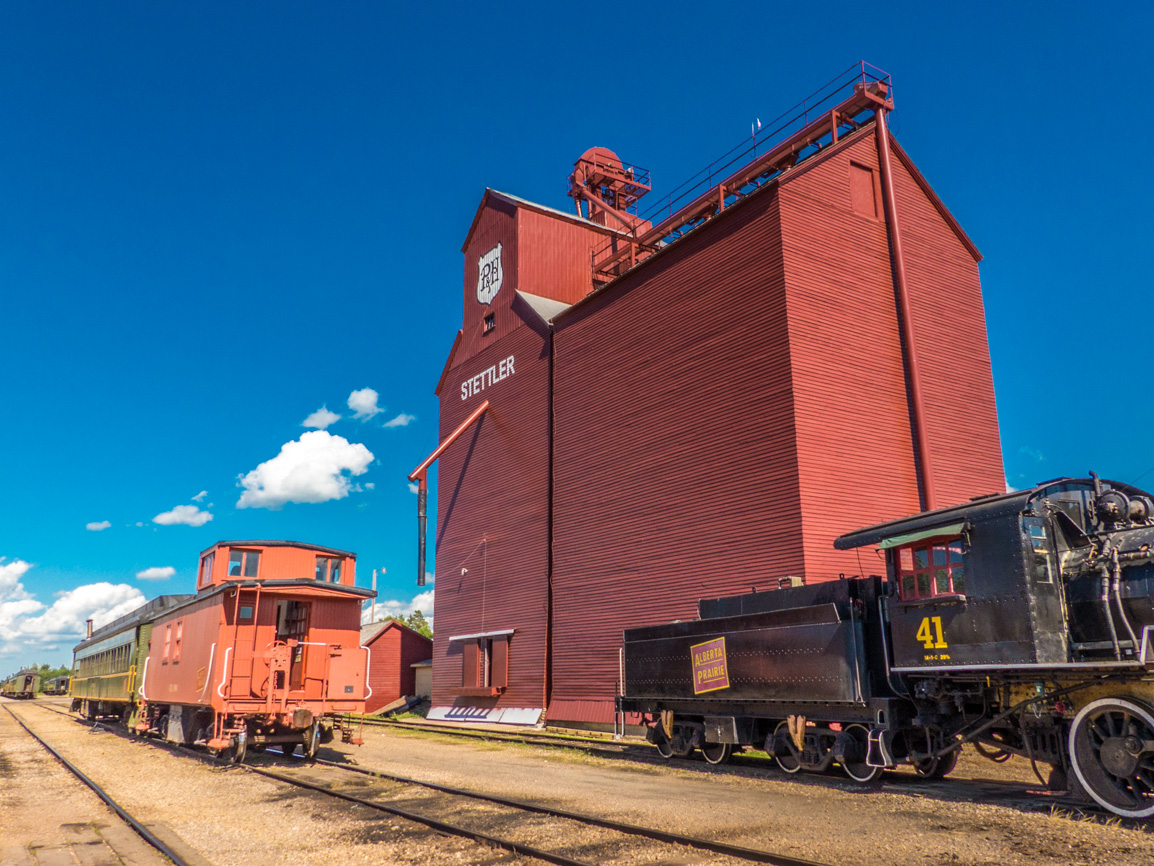
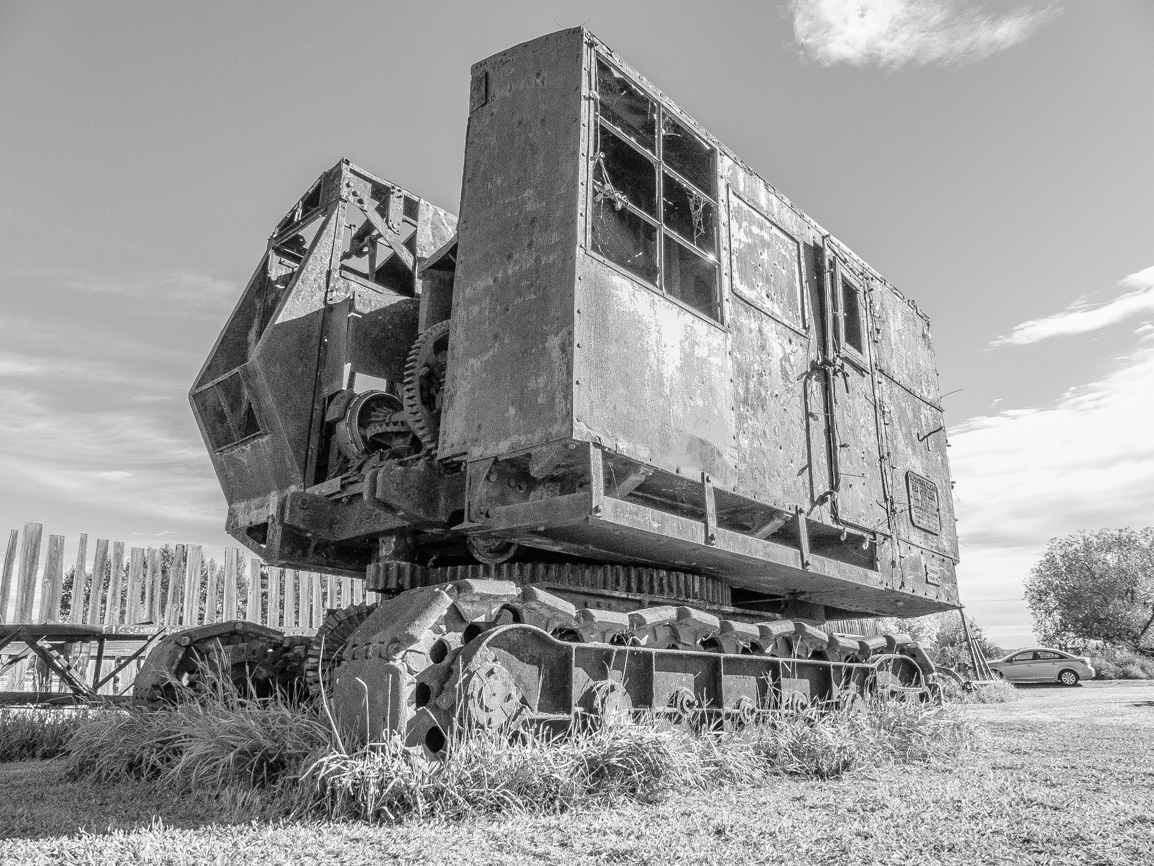
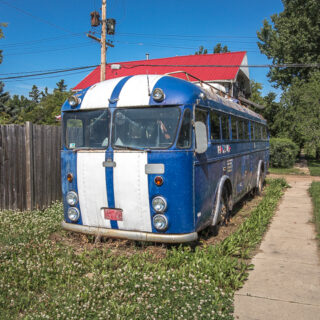
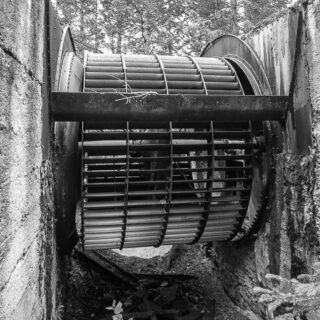
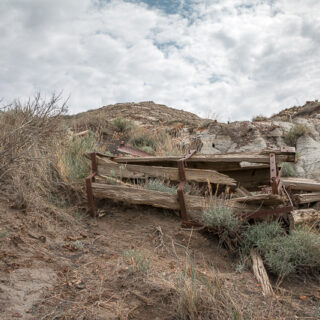
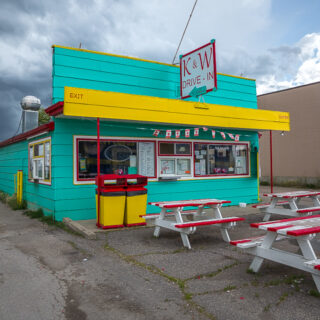
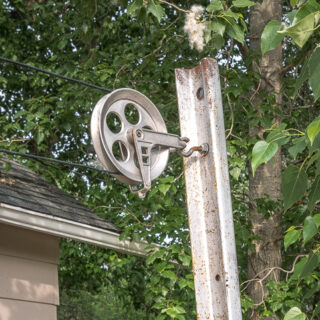
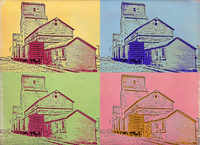





God bless those old shovels and draglines. I wish more of them, like the GEM of Egypt Ohio, could have been saved for us later generations who wouldn’t see them in action.
Seeing Big Brutus in West Mineral KS is on my bucket list (no pun intended) if I ever get the chance to visit the US prairies.
By dragline and shovel standards these ones are modest in size. Crazy, eh? Being a big fan of these big machines, we know of the ones you mention. HUGE stuff!
Hi there, I’m very interested in the old church you guys found there? Is that the old abandoned one on the south side of the current mine site? My friend is looking for a cool old church for an art project.
This one is a bit south east of the power plant, so I believe we are talking about the same building. There is a cemetery at the same intersection too. The place was pretty rough when we visited in the 1990s, so I can only assume it’s even in worse shape now.
My Uncle (Owen Saboe) worked at and was eventually the manager at the Diplomat mine…I went there many times as a young boy in the 60’s and early 70’s. Stood in the bucket of both the Marion and the Mr. Diplomat. I remember how exciting it was being spotting the the booms from the shovels rising out of the landscape as we drove into Forestburg. My father grew up on a farm nearby and I have cousins that still live and farm land in the area. We made many wonderful trips to visit family in Forestburg…many Christmas’s and Easters. I remember there was a “mine” garden that we used to go to harvest vegetables…think it must have been a communal company garden of some sort. I need to make a trip back one day soon. Kind of surreal seeing these images sitting in my living room in Prague, Czech Republic.
Awesome and thanks for sharing! I have only seen one picture of Mr Diplomat and what a monster it was – to see it first hand must have been simply amazing. Sounds like it was a wonderful experience for you.
There used to be a short CPR branch line coming in south from near Halkirk ending at the mine on the south side of the valley across from the Diplomat mine. This siding was called Cordel and served the Manalta coal operation, I think the Vesta Mine. At that time in the late 1970s they were not shipping coal out but the line was kept in service for hauling the occasional piece of heavy equipment in. I traveled the branch once bringing a couple flat cars worth of loader tires to the mine. I think this was one of the last movements on the branch and it was abandoned a couple years later. Power for the trip in was GP30 #5001. One of only two on the roster. Even at this late date the line was in fine shape and very smooth. I think it was built in 1950. This was a side trip for us and our usual run was the grain tramp up and down the Lacombe sub. Earlier I worked in the Cranbrook area on the CPR.
Amazing, thank you for sharing this!
The Vesta Mine tipple was closed down around 1976 and torn down. The spur line was kept there and used to deliver materials and parts for the construction of the Bigfoot and Brutus draglines, which were erected at the old tipple site. After they were finished building the Brutus dragline in 1981, the spur line was abandoned and the rails and ties pulled up.
Awesome Tim, that’s for that information. I see the old line you mentioned can still be followed on Google Earth.
My father worked at the diplomat mine and I believe the marion dragline arrived in the mid 1970s but I am not sure where it came from.
I grew up in Alliance not far away and am ashamed to admit I have never heard of this mine. It’s very interesting and your blog is amazing!